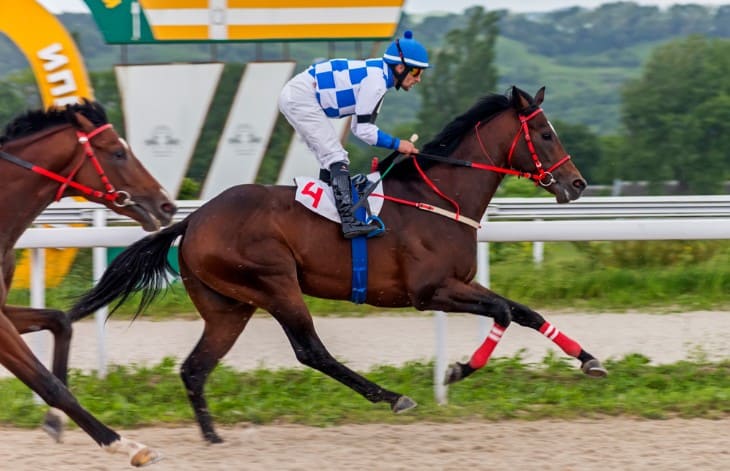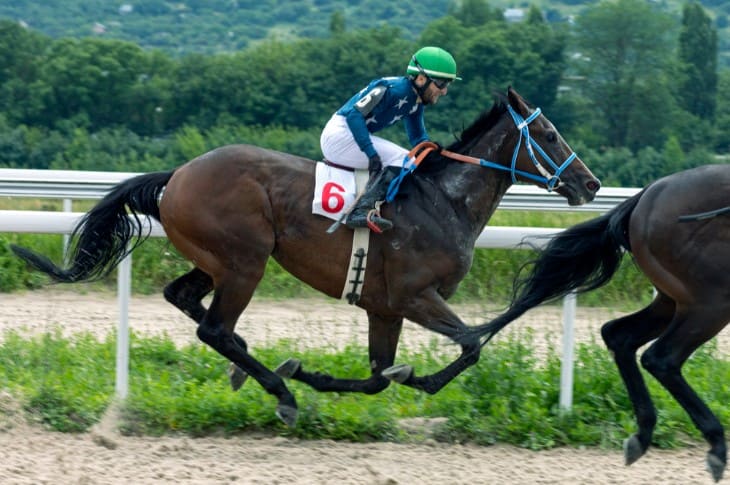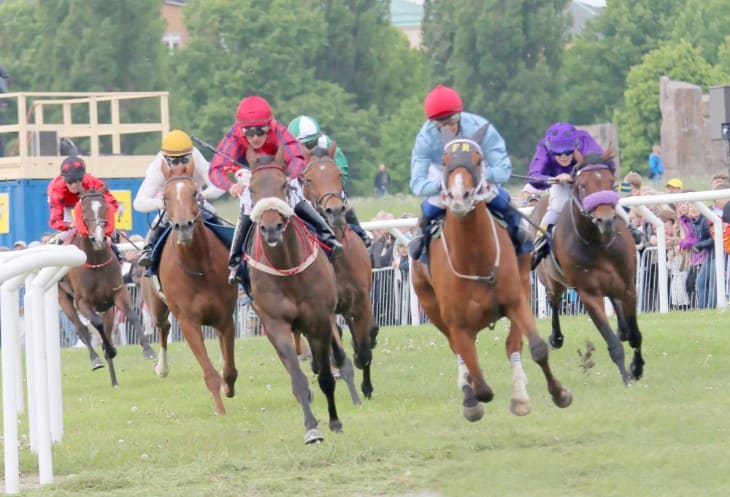The Cheltenham Horse Racing Festival is an event that is dynamic and full of fast races and vibrant scenes, making it a great opportunity for photography. In this post, we will be looking at ways to effectively capture the thrill and action of horse racing.
Who this Guide is For and What it Will Focus On
Anyone from beginner to professional can take advantage of the tips in this guide. Specifically, by photographing the key moments at Cheltenham.
Understanding Racing Photography’s Thrill And Challenge
It's thrilling but challenging. The main thing is to get into contact with them on time while everything they are doing happens rapidly thereby requiring the photographer to move swiftly as well as be very observant. This is because things happen so fast within races like those occurring at Cheltenham festival since horses race across quickly such that if you blink your eyes you may miss out on a few things or the jockey`s focus on serious business or crowd maddeningly excited thus it requires a photographer who must be swift enough before his subject moves away farther.
The most difficult task however lies in its pace. Horses are fast, and you have only a fraction of a second to shoot. It’s not just about pressing the button at the right time. You have to know what’s happening in racing. Knowing when horses are going to jump or jockeys are making important moves can help you anticipate what might happen next and prepare for it.
Additionally, photographers are challenged by their surrounding environments. Racetracks for horses sometimes become dusty or muddy due to uncontrollable circumstances which include weather changes too. For example, one minute it could be sunny while after and raining heavily during another moment therefore all these factors affect how you should use your camera and settings while taking pictures thus needs one to be flexible enough to enable you to resize his settings under different lighting conditions as well as weather conditions.
There are also safety concerns involved here. Horse racing can be unpredictable. A person taking photographs should ensure that he or she is safe all the time. You must always be conscious of your surroundings. It's important to know where you can stand to get good shots without being in danger.
A person taking photos at racing events like the Cheltenham Festival will find it exciting but not easy at all. It requires quick reflexes, a good understanding of the sport, and the ability to adapt to changing conditions. Yet once you've taken that perfect shot captioning the speed and emotion of their race, it's gratifying for one to say that those are the moments that make it worthwhile.
Essential Gear for Capturing the Racing Action
Choosing the Right Camera and Lenses
- Selecting a Camera for Speed and Quality: When it comes to racing photography, the camera's speed and image quality are key factors you need to consider. You need a camera that can take a lot of pictures quickly; this is called burst mode or continuous shooting mode. Cameras like DSLRs and mirrorless models work well here as they let you take multiple images in seconds meaning there's more chance of capturing an action shot just right therefore look for one which has excellent autofocus since they help in focusing on the horse`s movement fast enough thus maintaining them sharp within your pictures.
- Choosing Lenses for Versatility and Range: The proper lens in racing photography can make a big difference. A telephoto lens, on the other hand, is a long lens that can be used to zoom into faraway action. This works well for horse racing where one might be standing far away from the track. Preferred lenses fall between 70mm and 200mm. They are flexible enough to also capture close-ups of action or wide scenes. Some photographers may even use lenses longer than this such as 300 mm or 400 mm to take close shots of an object or person. It should be remembered though that long lenses could be heavy; you might therefore need a monopod or tripod support to hold them.
- Considering Lens Speed for Different Light Conditions: Lens speed is another consideration when looking at different types of lenses. In other words, how big is the opening through which light enters? For instance, a large aperture (low f-number like f/2.8) will work well in low-light conditions because it allows more light to reach the camera sensor, especially on cloudy days or late in the afternoon. These kinds of lenses also help create shallow depth-of-field focusing attention on the horse and jockey.

Recommended Cameras for Racing Photography:
- Canon EOS-1D X Mark III: Known for its exceptional autofocus system and high-speed continuous shooting, it's a top choice for professionals.
- Nikon D5: Offers impressive high ISO performance, which is great for low light conditions, and a fast burst rate.
- Sony A9 II: A mirrorless option that provides fast autofocus and high-speed continuous shooting, perfect for capturing fast-moving subjects like racehorses.
Investing in a Monopod or Tripod
Using a monopod or tripod is a smart move in racing photography. When you're shooting fast action like horse racing, keeping your camera steady is key. This is where a monopod or tripod comes in. They give your camera the support it needs, especially when you're using long, heavy lenses.
A monopod is like a single-legged tripod. It's lightweight and easy to move around with. This makes it perfect for racing events where you might need to change your spot quickly. With a monopod, you can stay mobile and still get sharp, clear shots. It's great for reducing the shake that can happen with hand-held cameras, especially when you're shooting at high zoom.
Tripods have three legs and are more stable than monopods. They're excellent for situations where you can stay in one spot for a while. If you're shooting a race from a fixed location, a tripod can be very useful. It holds your camera steady, which is crucial for getting clear photos. This is especially important in low light conditions or when using slow shutter speeds.
For racing photography, choosing the right monopod or tripod can make a significant difference. The Manfrotto XPRO Monopod is a top choice among photographers for its durability and ease of use, making it ideal for quickly moving around the racetrack. If you prefer a tripod, the Vanguard Alta Pro is highly recommended.
It offers exceptional stability and flexibility, crucial for capturing sharp images in various racing conditions. Both of these options strike a great balance between portability and functionality, crucial for the dynamic environment of horse racing photography.
Mastering the Art of Composition in Racing Photography
Understanding the Rule of Thirds
- The Basics of the Rule of Thirds: The rule of thirds is a simple but powerful tool in photography. Suppose you divide your photo into nine parts using two horizontal lines and two vertical lines so that each part occupies equal space with one another as points thereat intersect – these are where important components should be placed in their scene settings accordingly; In racing photography, it could mean placing a horse at any one of these spots within such point structures as this technique produces balanced photos.
- Applying the Rule in Racing Photography: To perfect your composition while at a racecourse, apply the rule of thirds accordingly. On these lines or intersections, place horse and/or action scenes; for instance, a horse jumping a hurdle can be nicely placed along any of the vertical lines. This way, you not only show the action but also make your photo look as if it is moving in one direction. By applying this rule, you are helping to guide the viewer's eye directly into your frame and toward the central point of interest.
- Balancing the Composition: Another aspect of the rule of thirds is balance. By placing the main subject off-centre, you give your photo a more natural and less staged feel. This particularly stands true when it comes to racing photography because you want to capture the excitement and dynamism of a race. The background and surrounding space play a part too. They help to tell the story and set the scene, giving context to the action you're capturing.
Capturing Emotion and Story
- Focusing on the Jockeys and Horses: When looking at racing photos with emotion, pay attention to jockeys and horses. The expressions they have or even their body talk for themselves speak much about what happened in that particular scene. Try catching moments when horses are intense, focused or determined. A focused gaze by a jockey or taut muscles on a horse says so much. These photographic details take us right into races where we sense tension and enthusiasm.
- The Crowd's Reaction: Don't forget the spectators; their reactions add depth to your photograph. Remember also that some spectators are blurred by motion as they wave hats or other items (Figure 11). Furthermore, such candid shots which contain emotions bear as much weight as those taken during track events. Those who look at them can easily guess how hunting was done from their faces, which deepens our understanding of these stories altogether.
- Place Helps too: The setting also plays its part in the narrative. They include racing tracks, terraces and the weather. Contextualising actions that happen. A panoramic perspective that takes into account what else is happening on the day can show what it is going to be like. This may be a sunny race day full of excitement or a difficult rainy race day. The background alters not only the mood of a picture but also its narrative.

Overcoming Lighting and Weather Challenges
- Overcoming the Effects of Bright Sunlight: In horse racing photography, bright sunlight poses a challenge as well. It casts sharp shadows and high contrast in the pictures you take. To control this use your camera's settings to obtain perfect light balance. Also, it could be important to adjust exposure compensation to help out in such cases. If lighting is poor, try placing yourself where the sun is shining from behind so that there are no shadows cast on subjects of interest; meanwhile, using a lens hood can help prevent lens flare making images taken in sunny conditions clear enough for viewing purposes even after printing them out with normal colours retained.
- Working in Overcast Conditions: Overcast skies create a different challenge. The light is softer, which can make photos look flat. To counter this, you might need to increase your camera's ISO setting. This makes the camera more sensitive to light, helping to brighten your photos. But be careful not to set it too high, as this can cause graininess. Overcast conditions can also be good for capturing details and colours without the harsh shadows of bright sunlight.
- Adapting to Changing Weather: Weather can change quickly, especially at outdoor events like horse races. Be prepared to adjust your camera settings to suit. If it starts to rain, protect your gear with a waterproof cover. Rain can also create interesting photo opportunities – like reflections on the track or water droplets on the horses. Be ready to capture these unique moments.
Positioning and Timing: Keys to Successful Racing Photography
Getting the right position and timing is crucial in racing photography. Your position determines what you can capture and how it looks. At a horse race, try to find a spot where you can see the track. A higher spot can be good for a wide view of the race. If you're closer to the track, you can capture more details, like the expressions of the jockeys and horses. Be aware of where the light is coming from. Shooting with the light behind you helps avoid shadows on your subjects.
Timing is just as important as positioning. Horse racing is fast, so you need to be ready to capture the action. This means knowing the race schedule and understanding the sport. If you know when a crucial part of the race is coming, like the final stretch or a big jump, you can be ready to take your shot. Watch the horses and jockeys – their body language can give you clues about what's about to happen.
One tip is to practise your timing. Before the main race, try taking photos of the warm-up or earlier races. This can help you get used to the speed of the sport. It's also a good chance to check your camera settings and make sure everything is working as you want it to.
Positioning and timing are key to successful racing photography. Choosing the right spot to shoot from and understanding the best moments to capture is essential. With practise and a good understanding of the sport, you can take dynamic and exciting photos that bring the thrill of horse racing to life.
In Summary
Photographing at the Cheltenham Festival requires timing, skill, and an understanding of the event's fast pace. Your goal as a photographer is to capture key moments that represent the essence of horse racing. This includes the competition, the horses, and the overall atmosphere of the festival. Each photo you take is a chance to showcase the excitement and appeal of horse racing. This guide will help you focus on these aspects to get the most out of your racing photography experience.







